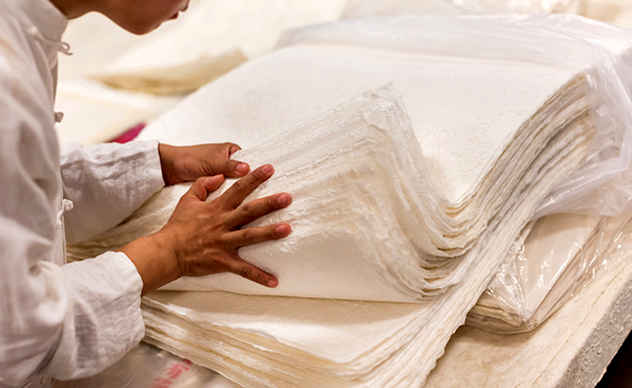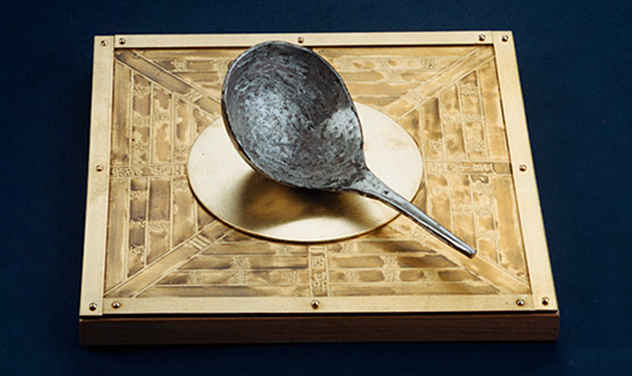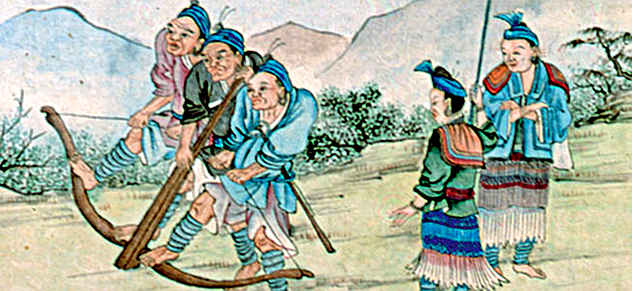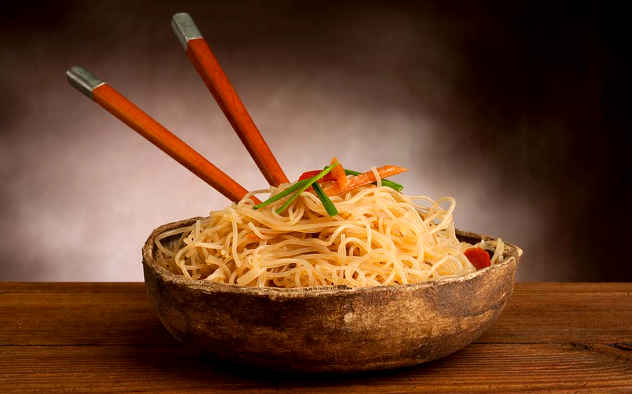10Booze
What is more important than the invention of alcohol? While the substance was certainly useful for tolerating the brutal conditions of the ancient world, it also had another, nearly miraculous effect. It was a sterilizer in an age when Purell and hand soap were distant dreams in the eyes of the OCD. It is arguable that booze is the very thing that made civilization possible, giving people clean drinking water and a way to sanitize wounds, foods, and pretty much anything else that they poured their liquor on. And of course, it was first invented in China. Nearly nine thousand years ago, as far as we can tell. In the late 1990s, archeologists uncovered shards of broken pottery in Northern China which had on them a strange residue. Upon further examination, the residue was determined to be left over fermented juices from rice, honey, and fruit, essentially giving us history’s first mead.[1] What makes the whole thing even better is that this Stone Age archeological site also revealed some of the oldest playable instruments ever found, in the form of flutes made of bone. So chances are, those ancient folk were doing the same thing we still do, listening to music and get smashed with our friends.
9Printing
Everyone knows Gutenberg right? From the famous Bible to the project trying to spread free textbooks, the man behind this name is one of the most important figures in the development of modern European culture. Johannes Gutenberg’s printing press helped shape modern Europe, and by extension, a great deal of the world. But guess what, the Chinese did it first, and they did it way earlier. During the reign of the Tang Dynasty (618-907), Chinese engineers began using wood blocks to print designs onto silk and other fabrics. This would soon transition into reproducing short Buddhist texts so people could carry their mantras with them. Finally, by 868, the first dated, printed book was published. It was a translated Indian Buddhist text called the Diamond Sutra.[2] Oh, and for a little perspective, Gutenberg was born around 1400, nearly 540 years after the publishing of the Diamond Sutra.
8Banknotes
Not long after coming up with an efficient printing press, the Chinese invented banknotes. Now, one might ask, why are banknotes interesting? They’re just lame pieces of paper! Well, they are important because we still use them today. Nearly all modern currency comes in the form of banknotes, pieces of colored paper that are given value by the very people who use them. Banknotes began to emerge in China, even before the publication of the previously mentioned Sutra, in the 700s, as inflation and devaluation made Chinese currency inefficient and even annoying to use in bartering.[3] So, they did the obvious thing and converted those gold coins into green Benjamins.
7Paper Making
Now, how could a group of people invent printing and banknotes, if they didn’t also create something for that ink to get stamped on! Around A.D. 100, the Han Dynasty (206 B.C.–A.D. 220) figured out how to make material on which they could write by using old rags, bamboo, hemp, and other fibrous plants and materials to make pulp. This pulp would then be filtered through a screen and allowed to dry, creating paper.[4] While the rest of the world had things like parchment and papyrus before then, this paper would ultimately win out as the world’s preferred method of recording information. It does not require specific storage conditions like papyrus, or specifically prepared animal hide, like parchment.
6Rudder
Ah, the rudder. Probably amongst the most underappreciated part of any boat. While the rest of the world used steering oars in lieu of built-in rudders, the ancient Chinese were one step ahead, inventing the stern-mounted rudder around A.D. 100.[5] This useful implement allowed for careful and precise turning, something that the steering oar was not quite as capable of, considering the oar had to rely on one strong man not getting too tired to steer the boat. With a rudder attached, all it would take to turn the boat was the moving of a lever. Oh, and just for a little more perspective, the oldest recorded use of stern-mounted rudders in Europe was about a thousand years later, in southern England. It looks like the Saxons got tired of having to turn their boats themselves!
5Toothbrush
While things called chew-sticks were prevalent in the world’s other ancient civilizations like Mesopotamia and Egypt, the first familiar, bristle toothbrush was invented by the Chinese. These useful tools first appeared in the 1400s in China, made from (not-so-kosher) bristles from the back of pig’s necks and attached to bamboo (or ivory if you were fancy) sticks.[6] Whereas chew-sticks were meant more for knocking bits of food from between teeth and freshening your breath (these sticks were often from fragrant trees), the bristle brush was explicitly for scrubbing teeth with the hopes of further preventing tooth decay. It’s a shame some people still seem to struggle with using this important invention.
4Compass
While this is certainly not an invention we use every day, like the toothbrush, the first magnetic compasses were invented in China during the Han Dynasty. They used magnetite ore to create a sort of spiked bowl looking thing that always pointed north. While initially, they used this invention to divine proper times for burials and other rituals, they would soon discover its use in navigating across the globe, both on land and water.[7] By the time the Tang Dynasty rolled around, they had refined the compass into a more familiar, iron needle based tool.
3Crossbow
Is any picture of medieval Europe complete without the gallant crossbowman, defending his city’s walls from invaders? Well, chivalrous romantics have the Chinese to thank for that image! The crossbow was invented during a chaotic and violent era called the Warring States period, which began around 480 B.C. and ended in 221 B.C. with the creation of the first Chinese empire. Crossbows were valued thanks to their ease of use and the fact that one did not have to rely on having a strong archer to use the weapon properly. The Chinese even took it a step further around A.D. 200, when a military strategist called Zhuge Liang created a “Repeating” crossbow; one of humanity’s early attempts at creating an automatic weapon.[8]
2Gunpowder
Here is another important weapon that Europeans love! By A.D. 300, Chinese scientists were putting down on paper that certain ingredients, including sulfur, charcoal, and saltpeter, when mixed together and ignited, would produce sparks and even explosions. This would rapidly develop into a tool both for ceremony and for war, with some of the first inventions based around this explosive powder being colorful fireworks. By A.D. 900, the Chinese would be using this powder to fire balls of iron at city walls and propel rudimentary rockets at tightly massed formations of enemies.[9] This is in contrast to the West, which only began describing gunpowder around A.D. 1200. Likely as a result of hearing of the technology during the Crusades, when Europeans would have their first glimpses into the world of the East.
1Noodles
While Italians have long claimed that they were the ones who invented the noodle, evidence that archeologists have found in China, suggests otherwise. In 2005, a sealed, preserved bowl of yellow noodles was found in Lajia, in northwestern China, underneath ten feet (3 m) of dirt. This bowl of noodles is estimated to have been buried about 4000 years ago, while the kinds of grain used in this type of noodle had been cultivated in China for at least the last 7000 years. That means that while 4000-year-old noodles seem to be the oldest we have found definitive proof of, it is highly possible that the ancient Chinese were preparing this dish for far longer.[10] While the Italians may have come up with this type of food on their own, it seems like the Chinese are winning the argument about who it was that made the first steamy, delicious bowl of noodles. My name is Daniel Kushnir and I’m a writer from Columbus Ohio. My interests are history, long walks, and writing and my friends include a bear, a rat, and an Austrian.
























